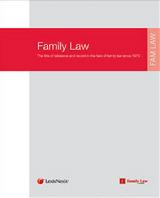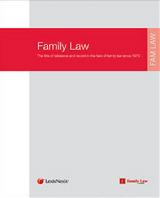- News & Comment
-
Online Shop
Online Services
Looseleafs
Law Reports
Books and eBooks
- CPD & Events
- Authors
- About Family Law
- Contact












 24 APR 2024
24 APR 2024

 24 APR 2024
24 APR 2024

 22 APR 2024
22 APR 2024

 22 APR 2024
22 APR 2024

 18 APR 2024
18 APR 2024









 The number of cohabiting couples is projected to rise from 2.3 million in 2008 to 3.8 million in 2033, according to new statistics released by the Office of National Statistics.
The number of cohabiting couples is projected to rise from 2.3 million in 2008 to 3.8 million in 2033, according to new statistics released by the Office of National Statistics.
Cohabiting adults are also predicted to become older, with the number aged 45 to 64 set to more than double between 2008 and 2033, from 0.9 million to 2.2 million, whilst the number aged 65 or more is projected to quadruple from 130,000 to almost 600,000. Whereas in 2008 only 23 per cent of male cohabitants and 19 per cent of female cohabitants were aged 45 or more, by 2033, these proportions are projected to rise to 37 per cent for males and 33 per cent for females.
Over the same period, the proportion of those cohabiting who have never previously married is also projected to rise from 74 per cent to 87 per cent.
However, the proportion of the adult population who are divorced is projected to remain unchanged between 2008 and 2033 at 8 per cent for males and 10 per cent for females. This pattern, however, varies by age group. Over the next 25 years the proportion of the population aged between 35 and 44 who are divorced is projected to halve, falling from 12 per cent in 2008 to 6 per cent in 2033. In contrast, over the same period, the proportion of the population aged 65 and over who are divorced is projected to almost double, rising from 8 per cent in 2008 to 15 per cent in 2033. At ages 45 to 64, the proportion of the population who are divorced will remain steady over the next decade and then start to fall.




Leave a commentOrder by
Newest on top Oldest on top